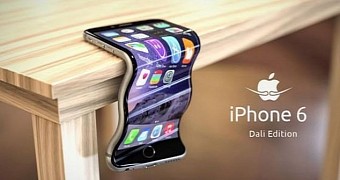Of the dozens (if not hundreds) of patents filed by Apple each year, few (if any) materialize in the form of end-products. Entire devices almost never come to fruition as originally written on paper, but Apple keeps at it year after year. Why?
It’s simple, really. The California behemoth isn’t thinking short term. You never know when the right technology meets the right scenario and suddenly there’s demand for a certain something. And to capitalize on that, you need to secure that invention before someone else does it.
An insurance policy
Think about it. It’s a lot like one of those mile-long clauses in an insurance policy that says “if this, then that.” You need to be covered for that ‘if’ scenario if you ‘then’ want to get paid. Take for instance the latest Apple patent involving “flexible electronic devices.” It's eons ahead, but Apple wants it to be theirs, and theirs alone.
The abstract of the document published by the United States Patent & Trademark Office states that “A flexible electronic device may include a flexible display, a flexible housing and one or more flexible internal components configured to allow the flexible electronic device to be deformed.”
Further down that paragraph, Apple reveals that this particular invention is preferably for a smartphone. Among the internal components, Apple mentions flexible batteries, flexible printed circuit boards and other flexible stuff, to achieve a completely bendable device that can support being crammed anywhere and not sustain damage.
The battery in particular would pack both flexible and rigid portions “or may include a lubricious separator layer that provides flexibility for the flexible battery,” according to Apple.
Invention by discovery, and vice versa
More often than not these days a complex invention like the one described by Apple here will first require the discovery and / or invention of other materials and technologies. A device like this one is currently so farfetched that it would take years in development just to achieve a modest prototype.
Yet Apple seems to believe this will one day be doable in great numbers and with a high reliability factor. Chances are they’re right. Hopefully, we’ll be around for when this happens.
Royalty fees
Regardless of whether Apple eventually makes this product happen, it still stands to make some money off royalties in case someone else invents the same thing. It’s basically a game of finders-keepers in the patent world, which is why the tech giants keep suing each other whenever one of them uses a certain something that even remotely resembles a patented invention by the other.
If a court finds the vendor guilty of using someone else’s invention, it can ask the vendor to halt sales of that product, or continue selling it but pay fees to the original inventors. In any case, the original inventors can pretty much do what they want. Including sit on their patented technology for decades and prevent anyone else from using it.
For who's asking, the iPhone 7 will most likely be rigid. And so will the iPhone 8.

 14 DAY TRIAL //
14 DAY TRIAL //